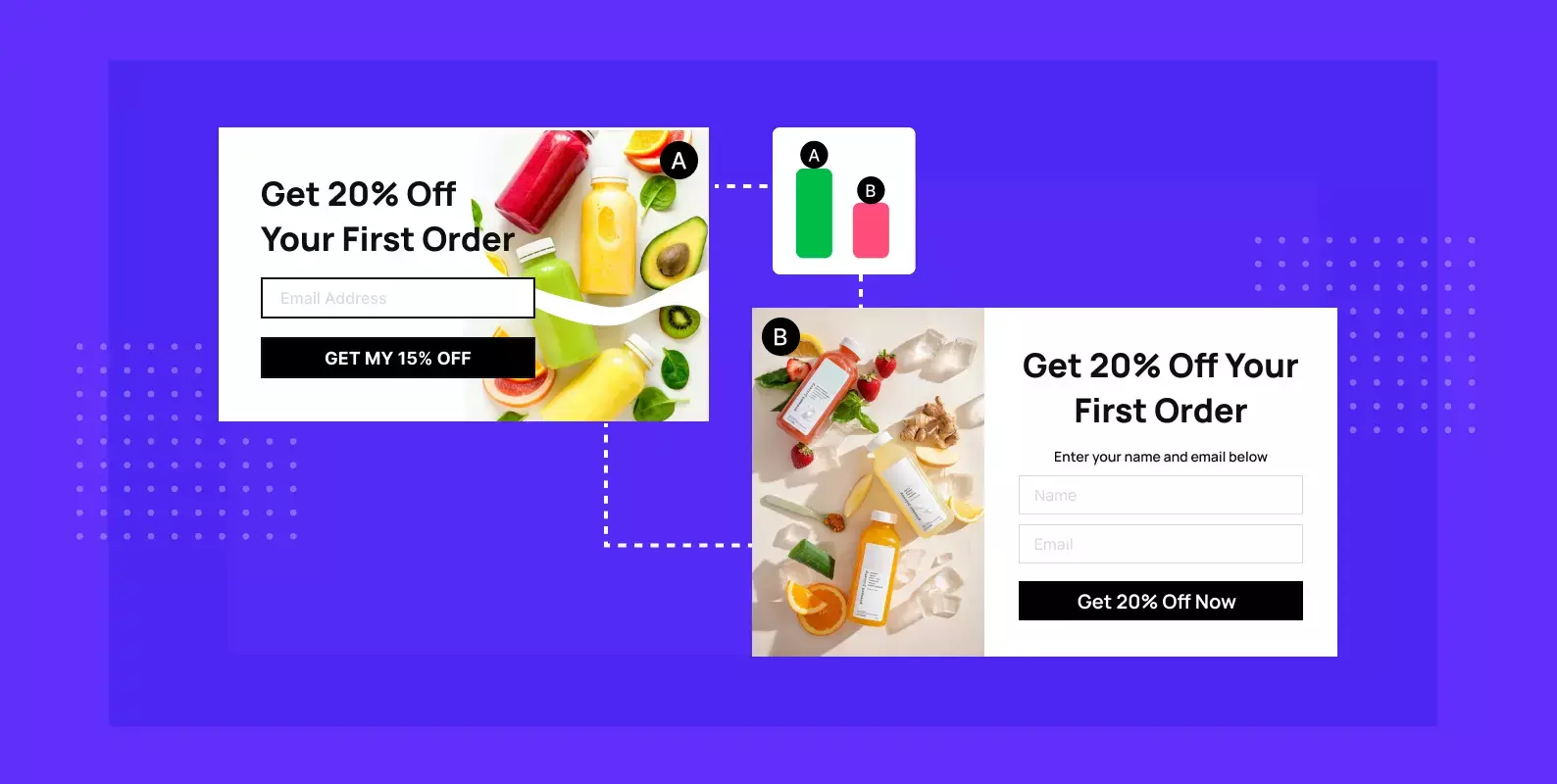In the early days of ecommerce, A/B testing was primarily used to test the effectiveness of email marketing campaigns. A marketer might, for instance, compare the success of two distinct subject lines to find the one that gets the most clicks.
However, with the rise of ecommerce and the popularity of online shopping, A/B testing has emerged as a vital method for improving the online shopping experience by enhancing product pages, the checkout procedure, and other key areas.
This blog will delve into the benefits of A/B testing, the various types of A/B testing, knowing what to test, and the best tools available for doing A/B tests.
What is A/B testing?
A/B testing, also known as split testing, is a type of randomized experimentation in which two or more variations of a variable (web page, email, advertisement, etc.) are displayed to different groups of target audience simultaneously to identify which version has the most significant impact and drives business KPIs.
The original, or “A” version serves as a control whereas the “B” version is the modified variant. Visitors are randomly assigned to either the A or B version, and the performance of each version is measured based on a specific metric, such as conversion rate, click-through rate, or bounce rate.
Ecommerce brands can make data-driven decisions to enhance their website or marketing campaigns by comparing the success of the two versions.
Benefits of A/B testing
- Increased conversion rates: An online store can improve its conversion rate by running A/B tests on various website features or landing pages.
- Improved user experience: A/B testing can help ecommerce brands identify and eliminate elements of their website or landing pages that confuse or frustrate users, leading to an improved user experience.
- Increased revenue: By increasing conversion rates and improving the user experience, A/B testing can lead to increased revenue for an ecommerce brand.
- A better understanding of customers: Through A/B testing, ecommerce brands can gain insights into what elements of their website or landing pages resonate with customers, allowing them to understand better and meet their needs.
- Personalization: Online retailers can improve their conversion rates by providing a more personalized experience to different segments of site users.
- Data-driven decision-making: With the help of A/B testing, ecommerce companies can make educated decisions on how to improve their websites and landing pages.
How to do A/B testing?
Step 1: Identify the pain points
You can use customer surveys, analytics, and heatmaps tools or talk to customer support and the sales team to identify an issue.
Pain points could be anything from website visitors bouncing before 50% of the category page scroll to friction in the checkout process.
Step 2: Choose which metric to track
The metric you choose must be aligned with the goals you want to achieve with a/b testing. Also, by tracking too many metrics (typically more than one), you risk making an inaccurate decision.
If the identified issue is friction in the checkout process then the correct metric to track should be the conversion rate.
Step 3: Create a hypothesis
After settling on a goal, the next step is to generate hypotheses (supported by data) regarding improvements that will yield better results. Thus, one can hypothesize that using one-page checkout systems can boost conversions by as much as 21.8%.
Step 4: Identity the key variables
Identify the variables that you want to test such as messaging, offers, or segmentation criteria. Going ahead with the above example, the key variables to consider are the various elements of the checkout process, such as the checkout form, payment methods, and assurances of safety & trust.
Step 5: Create variations
Create variations for each variable you want to test. For instance, you could test two different checkout forms.
Step 6: Choose a sample size
If you want to get reliable findings, you’ll need to figure out how many people to include in each test group. Julian Shapiro recommends a large enough sample size is necessary for reliable outcomes from experiments.
- To statistically validate a 6.3% or greater conversion increase, a test needs 1,000+ visits.
- To statistically validate a 2%+ increase, a test needs 10,000+ visits.
Step 7: Test and measure results
Run your A/B tests and measure the results to determine which variation performs better. Google suggests continuing on with an experiment until one of the following occurs:
- Two weeks have elapsed to account for cyclical fluctuations in web traffic during the week.
- At least one variant has a 95% chance of outperforming the baseline.
Step 8: Analyze and optimize
Use the insights from your A/B testing to optimize your strategy. This could involve refining your segmentation criteria, personalization tactics, or messaging to improve the effectiveness of your campaigns.
Step 9: Continue testing and optimizing
Continuously test and optimize your strategy to ensure that you are delivering the most effective customer experiences.
A/B testing strategies for ecommerce
There are many different elements of your website or marketing campaigns that you can A/B test. However, we have listed 6 things that you should A/B test as an ecommerce marketer.
1) A/B test call-to-action (CTA) buttons & Pop-ups:
Marketers can test different CTA button text, colors, and placement to see which are most effective at encouraging visitors to take a specific action, such as adding a product to their cart or signing up for a newsletter.
Most people find pop-ups annoying, and they usually show up as soon as a user goes to a website.
To solve this pain point, Pura Vida incorporates a call to action button that is visually consistent with the rest of its category pages. Customers can save 20% on their purchase by signing up for its text message list while they’re there.
The phrase “Sign Me Up!” serves as a solid call to action, encouraging readers to take the next step.
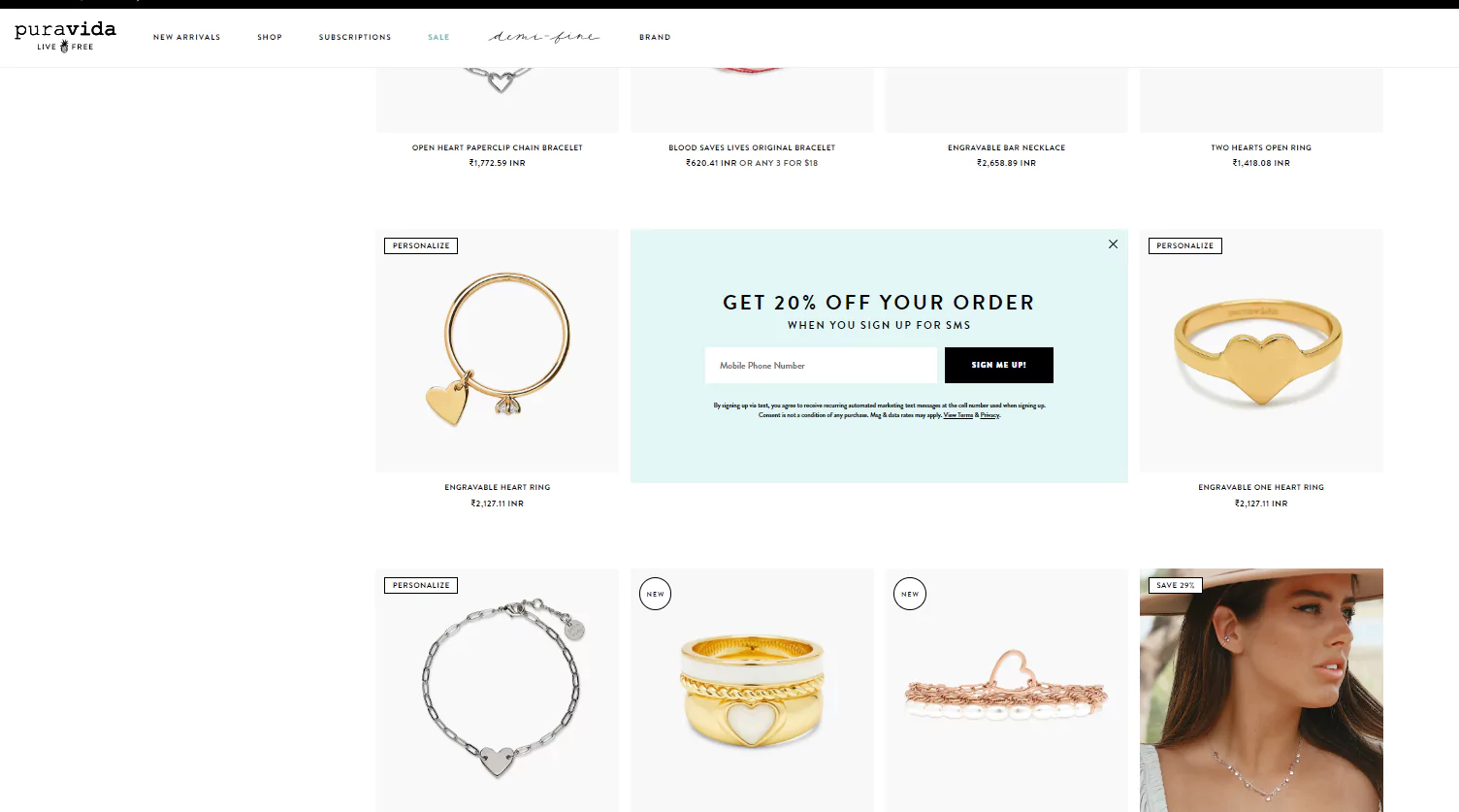
2) A/B test product descriptions:
Test different product descriptions, text content, and images to see which are most effective at encouraging visitors to convert.
Mattress manufacturer Casper employed A/B testing to fine-tune its product page. They compared the performance of two variations of their product page, one with more photographs and one with fewer images, to determine which would generate the most number of purchases. The version with fewer images proved to have a better conversion rate.
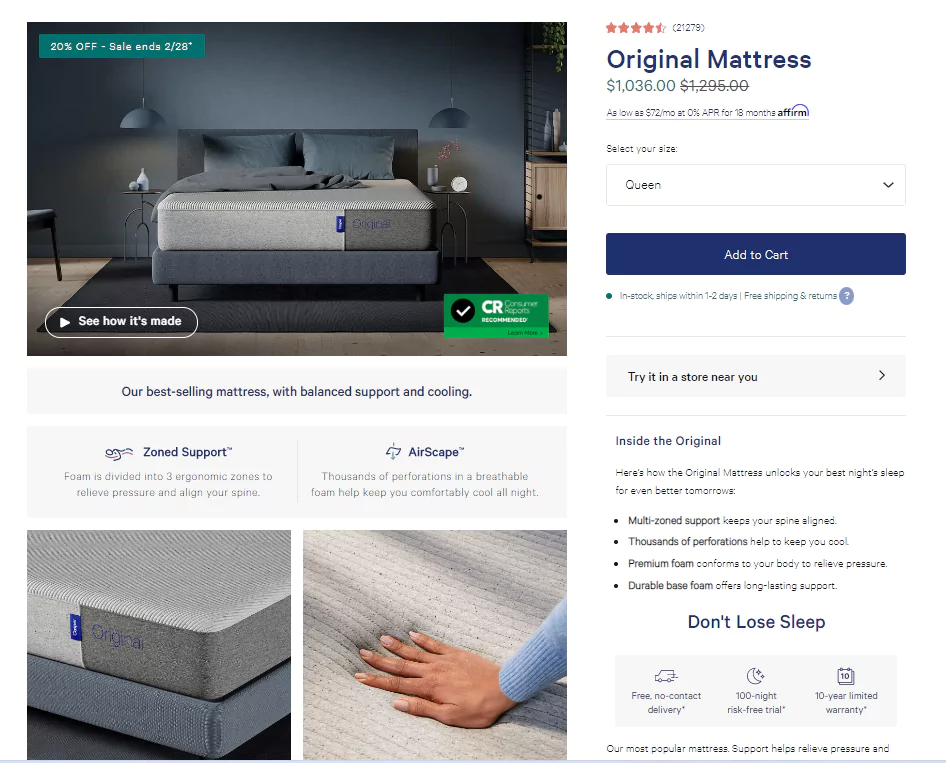
3) A/B test pricing:
You can try out several approaches to pricing, such as discounted prices, free shipping, and package deals, to discover which ones result in the highest conversion rates.
The subscription razor brand Dollar Shave Club ran split tests to determine the optimal pricing structure for its products. They conducted an A/B test to identify the optimal price for their subscription service’s monthly plan. According to the findings, setting prices only a tad higher resulted in increased total sales.
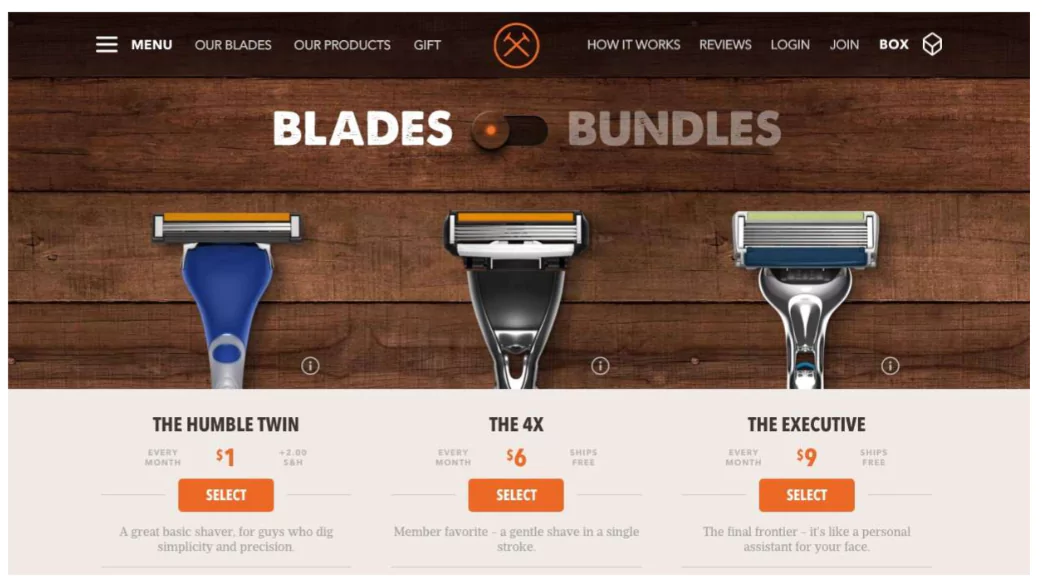
4) A/B test checkout process:
Test different versions of the checkout process, such as guest checkout vs. account registration, to see which one results in more completed transactions.
The eyewear company Warby Parker used A/B testing to optimize its website’s checkout process. They tested two checkout flows to see which version led to more completed purchases. The results showed that a more straightforward, two-step checkout process was more effective than a three-step process.
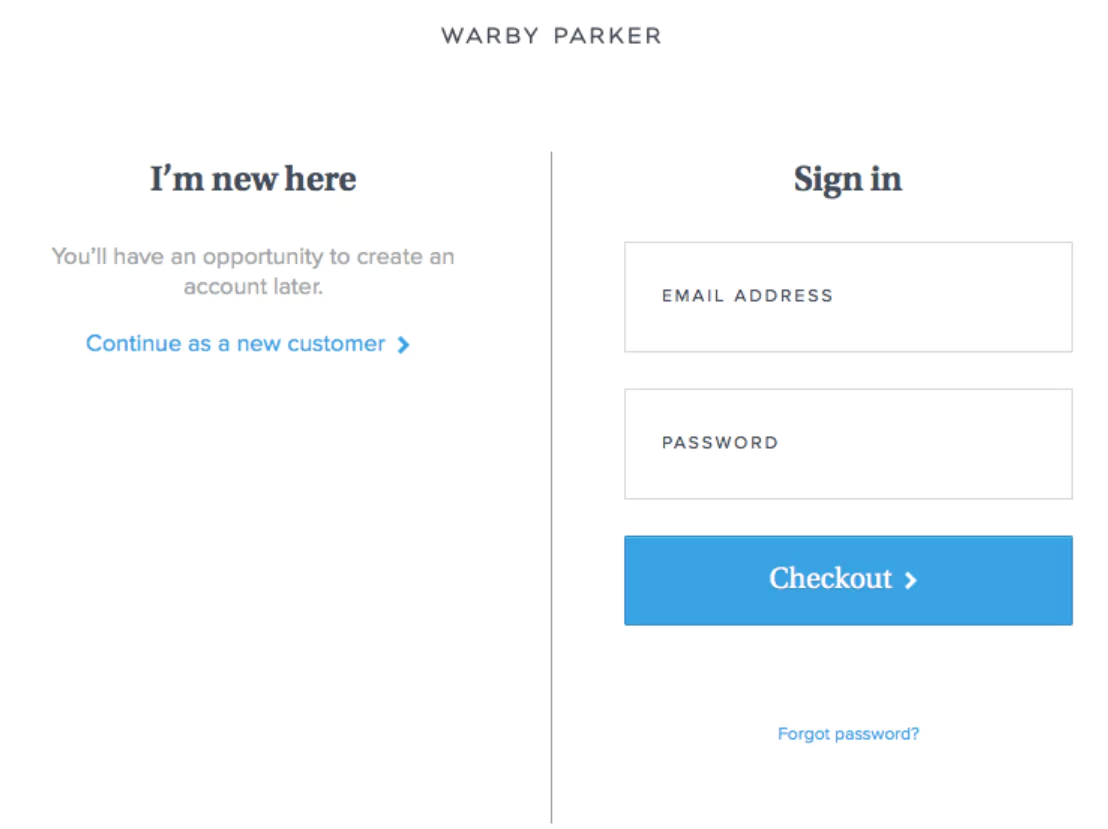
5) A/B test email campaigns:
Determine which email marketing campaigns are most successful by experimenting with various subject lines, headlines, email copy, and call-to-action buttons. Here are 6 elements of your emails that you should be A/B testing:
- Sender name
- Subject line
- Hooks
- Tone of voice
- CTA
- Images
Hubble Contacts, a subscription-based contact lens company, used A/B testing to optimize its email marketing campaigns. They tested different subject lines and email copies to see which versions led to more opens and click-throughs. The results showed that personalizing the subject line with the recipient’s first name led to higher open rates.
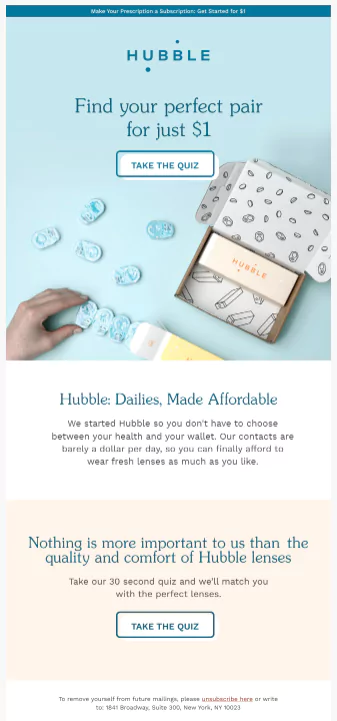
6) A/B test ads:
A/B testing ads in ecommerce is a marketing technique used to test and compare the effectiveness of different ads. The goal is determining which ad variant generates the most clicks, views, and conversions.
In 2018, Wayfair conducted an A/B test to determine the effectiveness of different ad variations for their outdoor furniture line. They created two ad variants: one with a static image of a patio set and a “shop now” call-to-action (CTA), and another with a lifestyle image of people using the patio set and a “shop now” CTA.
Wayfair ran both ad variations simultaneously on Facebook and Instagram for two weeks and tracked the number of clicks and conversions generated by each ad. They found that the lifestyle image ad generated 11% more clicks and 21% more conversions than the static image ad.
Wayfair used this data to make its outdoor furniture ads more effective by including more lifestyle imagery.
Types of A/B testing
Here are 6 types of A/B testing that an ecommerce brand can conduct:
1) Split URL testing:
This testing involves creating two different versions of a website or landing page, then sending visitors to each version.
For instance, you can design two versions of its product page: one with and one without a video demonstration of the product. Then, send half of the website visitors to the video page and the other half to the non-video page, to find out which version has a greater conversion rate.
2) Multivariate testing:
This type of testing involves making multiple changes to a website or landing page and testing different combinations of those changes to see which performs best.
Simply put, it allows you to compare the effectiveness of multiple permutations of the homepage’s headlines, graphics, and call-to-action buttons.
3) A/B/n testing:
This type of testing is similar to A/B testing but allows for more than two versions of a website or landing page to be tested at once.
An ecommerce brand might create three different versions of its checkout page and try them all simultaneously to see which version had the highest conversion rate.
4) A/B/X testing:
This type of testing is similar to A/B/n testing but with different changes.
An online store, for instance, might make three variations of its checkout page and run A/B tests to discover which one results in the highest conversion rate. These variations might include a video walkthrough, a chatbot, and a standard form.
5) Personalization testing:
This testing involves creating different versions of a website or landing page tailored to different segments of visitors (e.g. by location, browsing history, etc.) and measuring their conversion rates.
An online store might split its homepage into two versions, one for customers in the United States and one for Canadians, and then see which one gets the best response.
6) Behavioral testing:
It involves tracking the behavior of visitors on a website or landing page and using that data to make changes and test different hypotheses.
Online retailers, for instance, may keep tabs on how far their customers scroll in order to determine the efficacy of various page designs and call to action for boosting conversions.
Best tools for A/B testing
1) Google Optimize
Pricing – Free tool
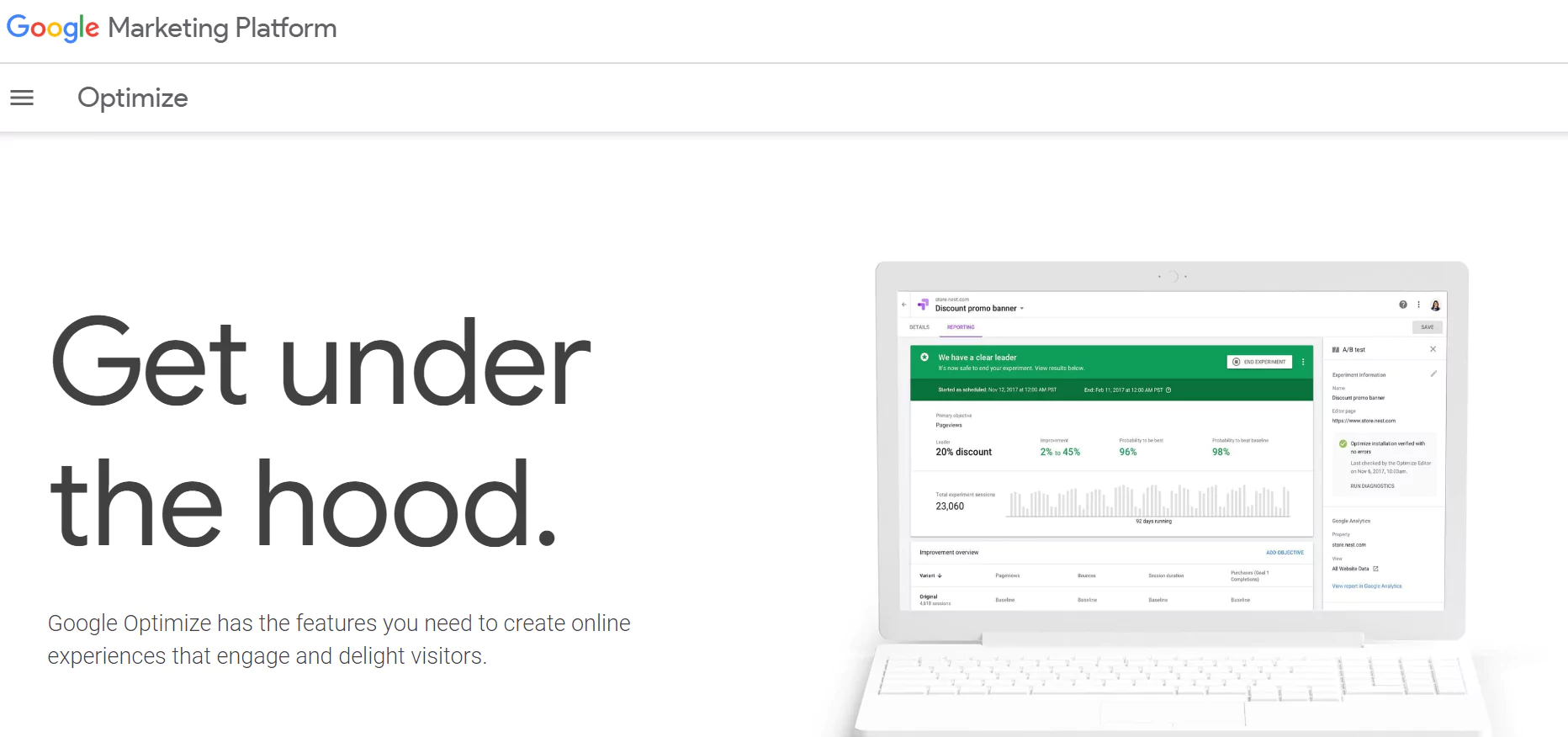
Google Optimize is an easy-to-use tool that integrates with Google Analytics to make A/B testing of website elements a breeze. It allows you to customize tests based on your visitor requirements and user attributes.
2) Optimizely
Pricing: Contact for pricing
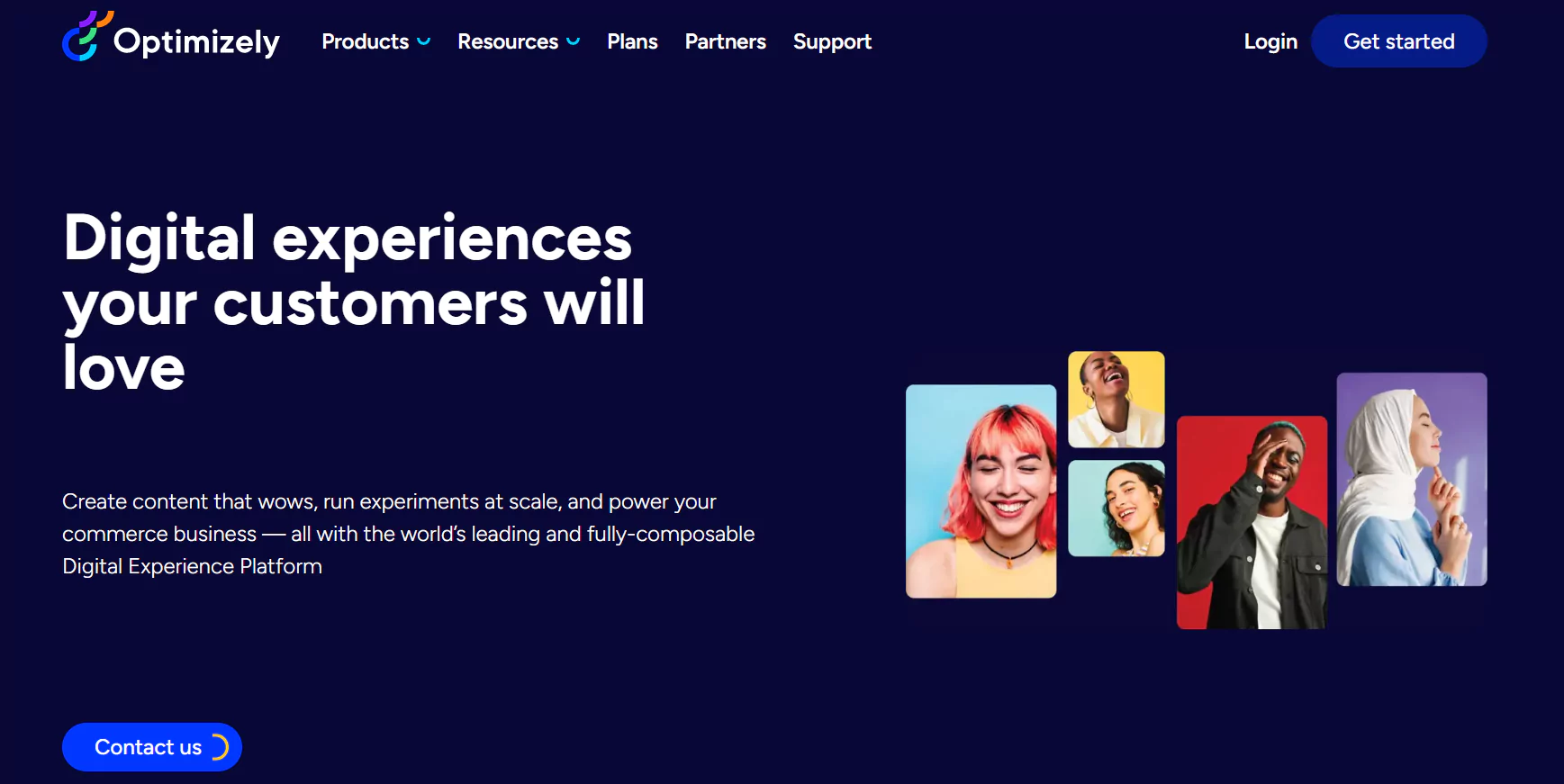
Optimizely is a popular A/B testing tool with powerful capabilities like multivariate testing, user-specific data, and analytics integration. The ability to conduct unlimited parallel experiments is the feature that really stands out, as it allows you to constantly test and optimize your efforts to provide the best possible user experience.
3) VWO
Pricing: They provide a free Starter plan and a growth plan for small enterprises, starting at $200 if you want to test at least 10,000 unique visitors monthly. In addition, they have a Pro plan starting at $480 and an Enterprise plan for $1068.
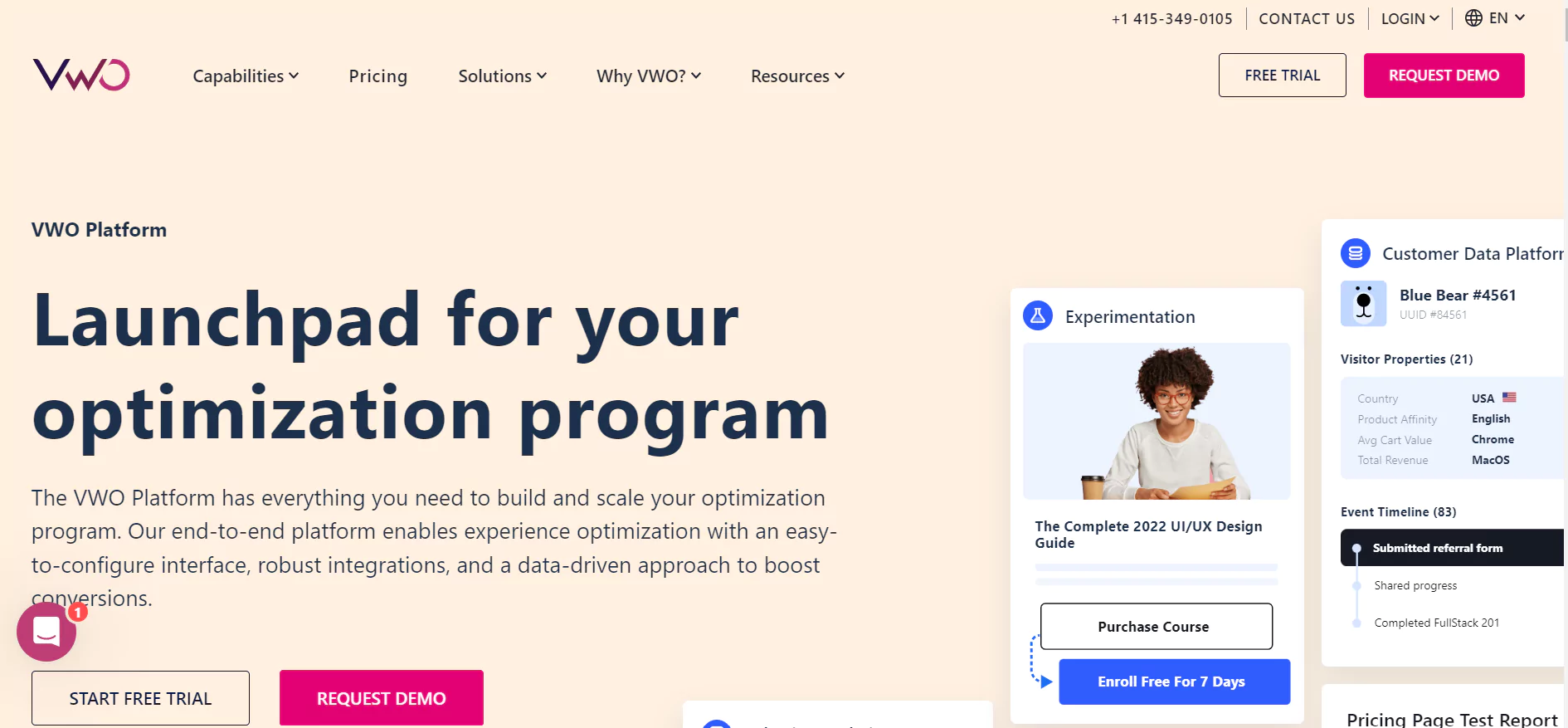
VWO is a full-featured platform that allows for user feedback, heatmaps, and even recordings of site visitors. Its robust integrations let you transfer data into external tools, streamlining communication across systems.
4) AB Tasty
Pricing: Contact for pricing
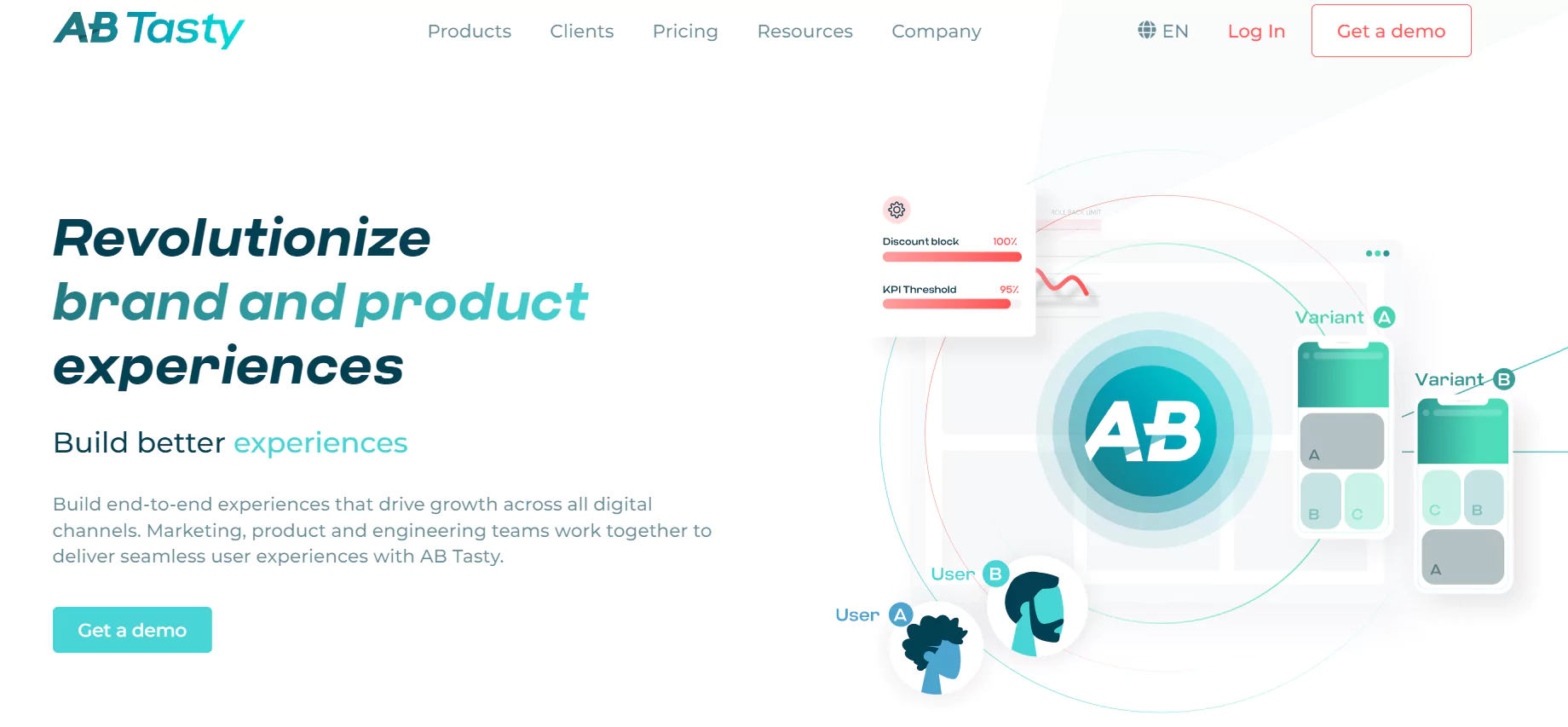
The A/B testing, split testing, multivariate testing, and funnel testing features of AB Tasty are invaluable to any organization looking to maximize conversion rates. It allows you to set goals for your experiment so the results you see in your data reports will be laser-focused on achieving them.
5) Crazy Egg
Pricing: They offer a 30-day free trial period that you can cancel anytime.
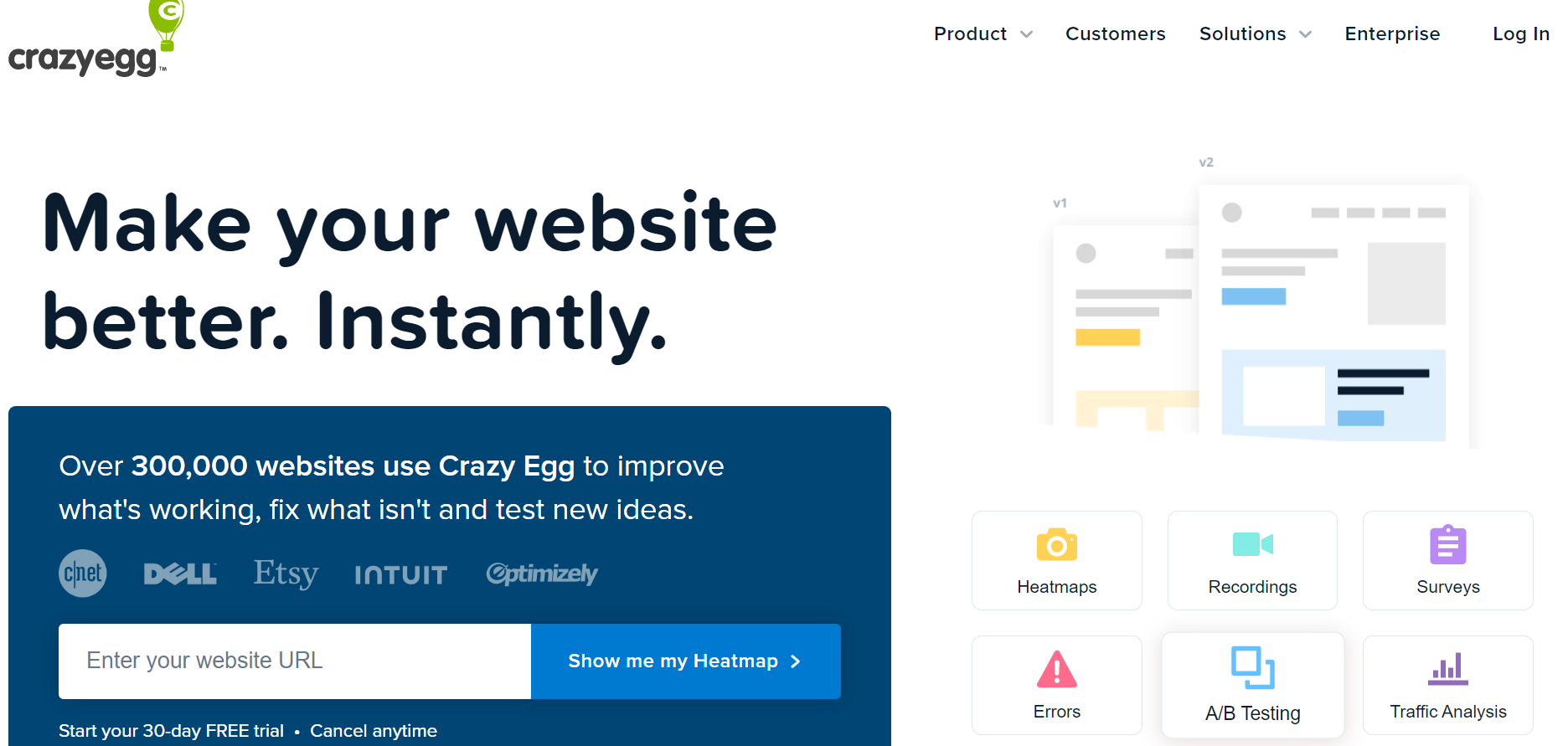
Crazy egg is a fantastic tool for gathering visual data on user activity, such as heatmaps and scroll maps, which can be used to drive A/B testing decisions. The snapshots feature allows you to compare your thorough reports side by side to see how your adjustments and optimizations stack up.
Final words
If you want your website or online presence to perform at its best, A/B testing is an absolute must. Remember to have a well-defined hypothesis to test, to focus on just one variable at a time, and to amass enough data to draw meaningful conclusions.
Initiate your own A/B tests using the samples and advice offered here as a foundation. You can take your brand’s online presence to the next level with the help of A/B testing if you’re patient and persistent.
You may also like
Essential resources for your success
